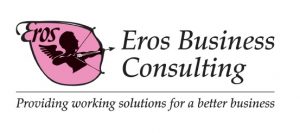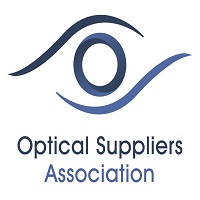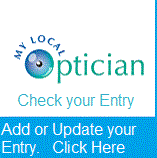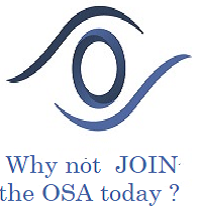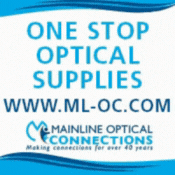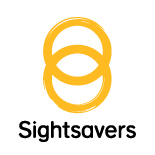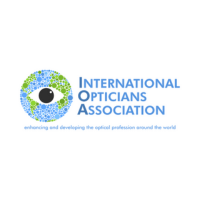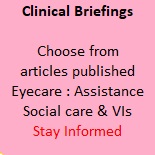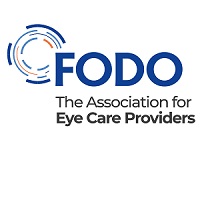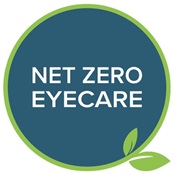Are you sure you are not paying too much VAT out of your net profits year on year?
VAT Cases to be shared with the community
The reason for this business brief is that many practitioners are still working blind to what there original agreed apportionment methods were that are not only either no longer relevant because of material changes in the business or worst still are costing the practice too much tax which in a profitable practice means direct loss of net profit.
Ignorance of the apportionment rate being applied will not save the tax payer from reclaims and fines if a HMRC visit were to ensue.
Some practices even at this stage have no approved written agreement on the apportionment of the dispensing service subsumed within the cost of specs or contact lenses.
How many I don’t know but they have survived because quite frankly HMRC have no time for chasing them down until the routine standard visit is requested under their governance procedure. When that happens is a matter of fate but happen it will. When it does the officer will discover the omission of you the tax payer and try to impose a system which may be retrospectively applied for 5 years.
As an Optical VAT advisor the effect of receiving a robust approach from HMRC is akin to looking down two barrels of a loaded shotgun.
I have found on almost every occasion that having ones calculations and proposals ready for inspection and invoking a visit by asking for an officer that negotiations are generally more pleasant and on a mutual understanding.
My case studies in this briefing vary from those that either had an agreement set around the late 90’s, or are still using the rough method of cost plus (invented to calculate the repayment of overpaid VAT before the profession won their case, but not for going forward) and those with no agreement or bogus systems.
The case studies have been anonymised for obvious reasons but I think you will be quite amazed at the savings that can be made not only for the future years but often going back.
The problem occurs because there is not and never can be a National figure for apportionment, so those with agreements rarely share the information between competitors and assume because they have a written agreement in place that it must be correct. Most of these agreements were either imposed by Customs officers or clients’ accountants who really didn’t have the knowledge now accumulated to do so. Some might say many still do not.
In the following case studies I have tried to offer as much business information as possible so you can judge which case best fits your business and what affect an improved apportionment figure might have on your business.
Case Studies
Study 1
One man old family practice was sole trader now a limited company in N.E. Market town.
Staff:
Optometrist 1
DO 1
Optical Assistants 2 P/T
Turnover Gross PA £202,000
Spread of sales
Fees 19%
C/ls 11%
Specs 69%
Sundries 2%
Net profit around £45,000 before payment to Optometric Director as dividends
Current written agreement commenced in 1995 is cost plus 40% uplift. This is one of the highest I have seen imposed. We can’t do much about the VAT repayment received back in ‘95 then but it certainly was lower than it should have been.
The cost plus system also means that unless you run quarterly stock takes or can account for the discounted costs of frames and lenses for each transaction within the quarter you are either paying for VAT on goods that are sitting on your stock bars and worse still paying more vat most likely on the higher priced frames that tend to sell more slowly and in less abundance.
Carried out Full Cost Apportionment Calculation as written in HMRC business brief.
Agreed with HMRC new apportionment rates on the sales figures and abandoned Cost Plus method on purchases. Also put in place a simple Eros Vat Calculator which assists in calculating VAT and also automatically checks that the practice does not exceed the De Minimus for Partial Exemption.
Provided advice on accounting procedures for splitting invoices between attributable, non-attributable and exempt purchases.
New rates Spectacles Taxable 51.87%
Contact Lenses 59.72%
Average reduction in Tax per annum was around £3800 per annum
HMRC allowed back calculation of 13 quarters from April 06 bringing in a repayment cheque of around £11,000. Going forward they also agreed a system that can be self reviewed by ourselves every 3 years with no need to call in an officer for reasonable non-material changes in percentage.
My client will be £4000 better off in Net profits next year even if his business doesn’t grow.
Study 2
Two optometrists (father & son) in own family practice trading as a limited company in small home counties town since early 80’s.
Staff:
Optometrist 2 (related)
DO 1 (also family)
Optical Assistants 3 P/T
Wife prepares books
Turnover Gross PA £420,000
Spread of sales
Fees 20%
C/ls 19%
Specs 60%
Sundries 1%
Net profit around £120,000 before payment to Directors as dividends
There was no current written agreement with Customs but the business has agreed by phone with accountant when the original overpayment was calculated in 96 that whilst the taxable rates were not onerous (44%) they had never been officially agreed for going forward and there were concerns that tax was being paid on c/l monthly schemes that included fees.
The MD was more alarmed at the risk of a visit and the scant records that had been kept. Very astute as while we were carrying out an inspection of the business out of the blue came a request for an inspection. We stalled this visit by explaining our request for an officer to discuss Full Cost Apportionment and suggesting that we prepared ready for such a meeting.
Carried out Full Cost Apportionment Calculation as written in HMRC business brief.
When we do a full cost analysis of a business you need to find out full information about the type and amounts of purchases for a set period as well as separating sales into components. You also need to delve into all salary, wage and pension agreements as well as related costs such as health care and training as well as staff advertising. In short we have a full view of the success/failure of parts of the business.
It always surprises us at Eros to find out how little practitioner business men know about their business, and with no budgets or sales forecasts sail in the Optical market without a compass. This lack of knowledge means that members of staff can never be rewarded for good results, either with a pat on the back or a financial reward paid for out of profits. This lack of empowerment especially in small group practices creates poor staff retention and interest.
Often our clients ask us to make the most of the information gained in a VAT case and leave them with a greater knowledge of the business. We can often show where their figures excel or fail compared with others data that we keep anonymous from them.
This practice had an SAS Iris PMS which proved very helpful on passed sales and providing csv files for easy extraction. But we always need to do a forensic investigation on purchases especially on splitting frame and lens purchases and counting lens and frame sales in units.
We agreed with HMRC new apportionment rates on the sales figures. Also put in place a simple Eros Vat Calculator which assists in calculating VAT and also automatically checks that the practice does not exceed the De Minimus for Partial Exemption.
Provided advice on accounting procedures for splitting invoices between attributable, non-attributable and exempt purchases.
Provided budgets and sales forecasts that together with a bonus scheme both for Directors and staff provided a greater stimulus for growth and a better understanding within family members on how future profits could be shared fairly.
New rates Spectacles Taxable 44.11%
Contact Lenses 47.258%
Average reduction in Tax per annum was around £1400.00 per annum
Going forward they also agreed a system that can be self reviewed by ourselves every 3 years with no need to call in an officer for reasonable non-material changes in percentage.
My client has been £4900 better off in Net profits in the past 3 years as his business has grown, and as he says free of worrying about a tax visit.
Study 3
Three practices one in C.London and two in Home Counties
Optometrists (father & son) London (trading as a limited company) and others in sole tradership.
Staff:
Optometrist 2.5 (related)
DO 1/1
Optical Assistants 2/1/1 P/T
Book keeper
Turnover Gross PA Sole Trader £691,000
Ltd Co. (New site)
Spread of sales
Sole trader
Fees 21%
C/ls 9%
Specs 69%
Sundries 1%
T/over £167K (2003)
Ltd Co
Not available
New company barely breaking even and not paying directors fees but paying for sight tests.
There was no current written agreement with Customs for the Ltd Company and no written agreement for the sole tradership but taxable percentages for all apportioned goods were high at 58%.
The proprietor was more alarmed at the risk of a visit and was worried that he had been using a too advantageous % for himself!!
Carried out Full Cost Apportionment Calculation as written in HMRC business brief.
Very little information had been kept on any sales except in day books. We needed to revisit spectacle order forms and request help from suppliers on old records.
Actually after the VAT was settled we ended up helping him install a practice management system (Optinet in this case)
We agreed with HMRC new apportionment rates on the sales figures for the sole tradership but with a separate VAT officer who proved exceptionally stubborn and would not accept a nominal figure for salaries in a non profitable Ltd Company we ended up at HMRCs insistence with an imposed 10% cost plus system, technically not allowed by Customs, it’s a strange world.
By arranging the careful data control of c/l d/ds and stock control of frames and lenses it turned out that the vat take was around the same as the sole tradership for which we agreed a fair FCA arrangement with a more enlightened officer.
Also put in place a simple Eros Vat Calculator which assists in calculating VAT and also automatically checks that the practice does not exceed the De Minimus for Partial Exemption.
Provided advice on accounting procedures for splitting invoices between attributable, non-attributable and exempt purchases.
New rates Spectacles Taxable 45.81%
Contact Lenses 49.90%
Average reduction in Tax per annum was around £2500.00 per annum
Going forward they also agreed a system that can be self reviewed by ourselves every 3 years with no need to call in an officer for reasonable non-material changes in percentage. We don’t know quite where we go with the Ltd Company but the ball is in their court as we have seen no material change in the business.
My client has been £48,000 better off in Net profits in the past 6 years.
We have dealt with many clients over the years and still amaze ourselves as to how many businesses continue to overpay VAT which in a profitable business means paying part of net profits to HMRC.
Bob Hutchinson has advised large multi nationals, national and medium sized groups as well as small family businesses.
If you feel a review is needed or need a quick chat about your agreed in writing apportionment give Eros a call. In every case our costs have been more than paid for by reduced tax often within the first year’s savings. If required we also leave the business with the management tools for greater profitability subsumed in the same costs.
Bob Hutchinson has been working in the centre of the optical sector since becoming an optometrist in the 70’s.
Recently retiring from clinical optometry, he continues to act for many SMEs as well as larger groups in strategy, PR & marketing and financial advice with a specialism in optical VAT.
His client base also includes large industrial companies in equipment and IT involved in the optical industry to name a few.
Still involved in optical decision making his aim has always been to encourage regulators and negotiators to allow the sector to flourish, and to assist others to own and manage financially robust businesses.
Eros Business Consulting
Solutions@erosconsultants.com







